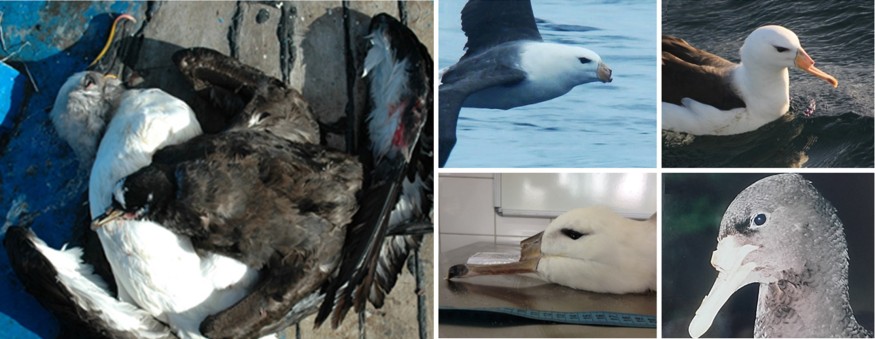Albatrosses and petrels are being intentionally killed or mutilated by fishermen to free them from hooks in the Southwest Atlantic.
An international team of researchers, including Dr. Alex Bond, Senior Curator in Charge of Birds at the Natural History Museum, documented some of the horrific injuries that albatrosses and petrels are enduring at the fishermen's hands.
The study's findings, which looked into the practices of intentional killing and extensive handling of albatrosses and petrels at sea in the southwestern Atlantic Ocean, are yet to be published in December in the journal Biological Conservation.

READ: Birds are Resilient to Heat Stress Due to Climate Change
Fishermen killing or mutilating albatross and petrels.
The study team observed that fishermen off southern Brazil employed various horrific methods to prevent birds from stealing bait in pole-and-line and handlining fisheries.
The fishermen employed hitting birds with a metal piece attached to a pole-and-line, other birds were trapped on line and killed, or are caught alive and then are either killed or mutilated during handling as the birds are removed from the lines.
The team also put out a global announcement asking anyone who had records of the mutilation they were trying to document. The team was able to gather observations dated from 1999 to 2019. The team discovered that cutting birds free from lines by slicing through the bill is localized and is confined in the region of the southwestern Atlantic Ocean.
The findings show that birds with these kinds of injuries are confined in Brazil, Uruguay, and Argentina's coastal waters.
The study team found 16 birds from four species, two globally threatened, were mutilated or killed. The finding revealed that the birds suffered from head trauma, broken limbs, wounds, or bill mutation.
Twenty-nine (29) birds from eight species were found alive but with serious bill mutations from intentionally cutting the birds' bills.
READ ALSO: Bird Poop Was Crucial in Growing Falkland Island's Iconic Grassland
Prevention of bird harm or killing incidences
The author hopes that this study will prevent cruel practices on birds. The team recommends that instead of killing or harming the birds, fishermen should resort to harmless deterrents like water curtains, jets, or sprayers that could prevent birds from diving for bait lines causing injury and capture. Hooks should also be set at night, and weighed hooks and streamers should be used to prevent birds from diving after baited hooks. Investing in information, education, and training campaigns aimed at fishermen should limit aggressive handling of the sea birds.
To prevent the harming of marine wildlife, the team suggested increasing remote electric monitoring (REM). This would require the use of GPS and video cameras to monitor the fishing of vessels at sea.
The researchers further hope that appropriate action should be aimed at the fishermen and the fishing industry doing the horrific act of killing or mutilating the albatross and petrels in the Southwestern Atlantic Ocean.
READ ALSO: Scientists Determine How Marsh Birds Survive Typhoons and Natural Disasters Such as Hurricane Zeta
Check out more news and information on Birds of Prey on Nature World News.
© 2025 NatureWorldNews.com All rights reserved. Do not reproduce without permission.





